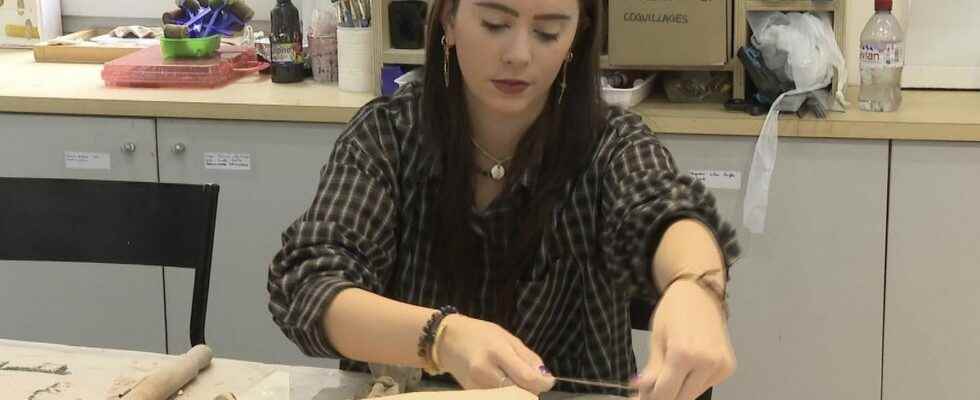Published on
Updated
Reading 2 mins.
Under the high ceiling of the former school of pharmacy in Montpellier (south of France), converted into a contemporary art centre, André, Kevin and Ambre work the clay under the watchful eye of an artist. Referred by their psychiatrist, they participate in a pilot program of “art on prescription”.
Of very different ages and life courses, but with episodes of depression or anxiety in common, these three patients, followed by the psychiatric emergency and post-emergency department (Dupup) of the Montpellier University Hospital, were not particularly interested in art so far. But they nevertheless respected this particular treatment to the letter, for the space of a few weeks.
An original cooperation between hospital and museum
For the Mo.Co, the city’s contemporary art center, and the psychiatry department of the university hospital, the “conviction” is shared: there is a “urgent need to raise public awareness of the benefits of artistic engagement for mental health“, insists Professor Philippe Courtet, of the University Hospital Center (CHU) of Montpellier.
Unprecedented in France, this project, inspired by experiments carried out in Belgium, Canada or the United Kingdom, has one ambition, “get patients out of hospital by prescribing art“, adds the professor.
“It liberates, it liberates enormously“, confides with a smile Ambre Castells, a 17-year-old high school student, while pouring paraffin into a clay mold: “When I’m here it’s like everything that could potentially hurt me is gone“.
Kevin Gineste, 23, has seen his “natural anxiety subside”. “We can go see psychologists, but the best thing is to do things with my hands, to externalize what I have in me“, he said, delighted to have met”people with the same type of problems“and henceforth ready to”go to the museum more often“.
Break the isolation
“It is a workshop around soft, malleable materials, which deform and pass from the solid state to the liquid state, in contact with the hand. This allows you to immerse yourself in the experience“, explains by observing the visual artist Suzy Lelièvre.
By their side, wearing a white apron to avoid getting dirty, André Broussous, 60, is delighted to have this time “improved” his “how to use (one’s) hands“, after having been initiated last year to body expression, under the aegis of the dancer Anne Lopez.
“Choreography gave me the art of fitting into a group, which was not easy at first, as well as greater confidence in my way of expressing myself, of moving“, he recalls.
“Mental health disorders, such as depression, lead to social isolation and a lack of self-esteem, which being in a group helps to break“, emphasizes Philippe Courtet, himself passionate about contemporary art.
“Here, it is not artists who go to patients, but patients who go to museums, meet artists and enter their universe.“, insists Elodie Michel, another expert in psychiatry from the CHU.
In Canada, visits to museums prescribed by doctors
In 2022, this program involved three groups of around ten patients. On the program: one-month artistic journeys, combining visits to exhibitions and artistic practice workshops.
At each session, they were accompanied by a fine arts student and an intern in psychiatry, notably in charge of the scientific evaluation of the project.
Entirely free for participants, “l’art sur prescription” is financed by the Mo.Co, the Regional Health Agency, the Regional Directorate of Cultural Affairs (Drac), as well as the city and metropolitan area of Montpellier, which has within its walls the oldest faculty of medicine in the world still in operation.
“We hope that this program (can) be extended to all and be reimbursed by social security“, pleads the director of the Mo.Co, Numa Hambursin, pointing out that in Canada treating physicians can already prescribe up to 50 museum visits per year to their patients.
